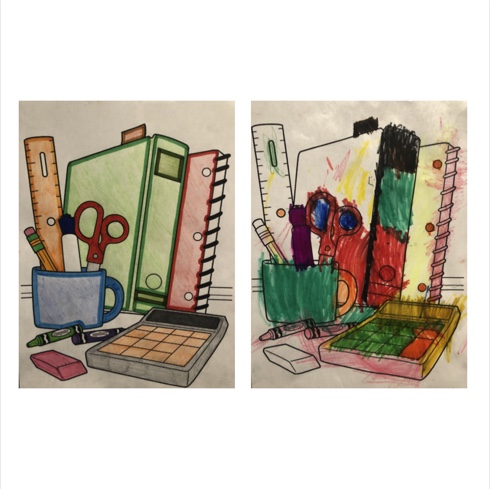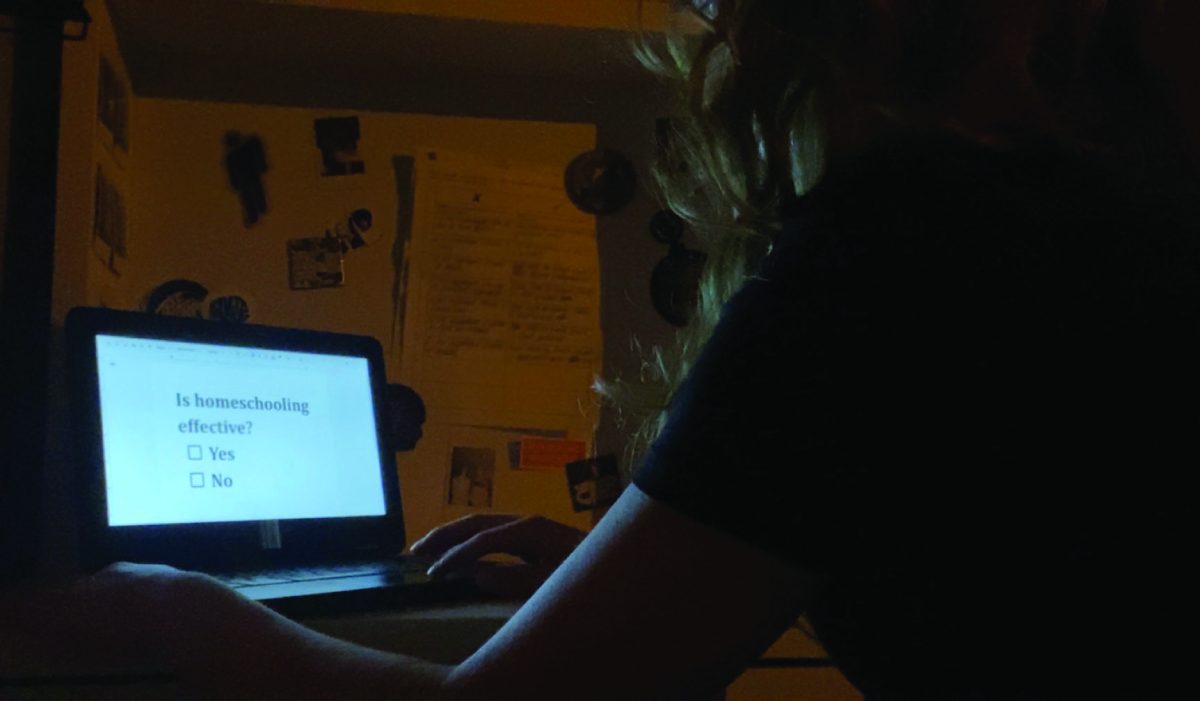Opinion: Coloring outside of the lines — The value of creativity in school

May 8, 2020
How often in school have you been told to answer a set of specific questions from a textbook? Only speak when you have been called on? Follow step-by-step directions exactly as they are given to you? Based on the traditional school setting, these questions will most likely result in your answer being: Too many times to count.
This isn’t necessarily a bad thing, though. A student’s educational life is often structured by guidelines set forth in an effort to create the best learning environment possible. However, the negative side of this method of learning comes when it is the only one being used by educators. By always providing students instructions to follow with the implied idea that not accomplishing them exactly is wrong, an important element of growth and individual expression is in danger of being left out: Creativity.
As defined by the Cambridge English Dictionary, creativity is “the ability to produce original and unusual ideas, or to make something new or imaginative.” This trait is meant to look different for everyone, and help students reach their own individual outcomes — something that Southeast senior Hannah Romell sees as a vital part of being in school.
“Creativity gives people the freedom to try something new and make your own mistakes in order to make something better,” Romell said. “It allows people to be unique and diverse in what they’re making, and that’s really important, especially when it seems like [everything has] already been done before.”
Romell believes that tapping into this creativity helps students not only understand material better by allowing them to think for themselves, but also creates a more fun and interesting experience in the classroom.
Romell isn’t the only one who sees the benefits of using this trait. RJ Metteer, the Lincoln Southeast director and department chair of Bands and Performing Arts, shares a similar opinion on the value of creativity.
“Creativity is at the heart of being human,” Metteer said. “It provides students the opportunity to think and express themselves emotionally, intellectually and physically.”
However, the opportunity for students to use their own creativity can sometimes be lacking and undervalued in their education.
“[In] some classes, it just seems impossible to be creative, because it’s clear that the teacher really just wants to see one thing,” Romell said. “There’s definitely a fear there that if you try to be creative with a project, that it will just get you an F.”
This exact attitude can make students feel as though their creativity has no place in the real world. As stated in a TED Talk titled, “Do Schools Kill Creativity?” by speaker Sir Ken Robinson, children can be steered away from things they enjoyed on the basis that they would never be able to get a job doing it. The consequence, according to Robinson, is that “many highly talented, brilliant, creative people think they’re not,” because what they enjoyed to do was stigmatized by their peers and educators.
Another form of limiting the value of creativity comes from the common emphasis within schools and school districts upon STEM (Science, Technology, Engineering and Mathematics) classes and programs. While these areas of knowledge are undeniably valuable and relevant, they can often leave little room for unbounded creativity — something different than, but just as important as, these scientifically based categories.
It’s clear that schools aren’t the only medium through which children are discouraged from the arts and towards the sciences. According to the Fast Company article titled “Old Navy Discourages Kids From Being Artists[…]” , in 2016 Old Navy introduced a new T-shirt design to their customers. These shirts read either “Young Aspiring Artist President” or “Young Aspiring Artist Astronaut.” Each phrase placed importance on careers that adults may see more economic reward in, and ignored the value of a child’s imagination. However, not everyone shares this thinking.
“I believe the arts are a critical component of a complete education,” Metteer said.
That’s why he is a strong proponent of changing this well-known acronym to “STEAM,” in order to include the arts, and thus, opportunities for creative expression.
While these changes can be made in schools to better value creativity in future years, its effects cannot be seen firsthand during the current national crisis. As the United States faces the coronavirus (COVID-19) pandemic, school closures have resulted in many students missing out on social interactions, extracurriculars and classroom experiences they have become used to. With the switch to remote learning, it can seem as though the opportunity to be creative is minimalized.
However, this is not true. Some classes may only require the writing of papers and answering of multiple choice, but breaks can be taken during school work to take advantage of one’s creativity. Through acts such as drawing, digital design, writing poetry, baking and more, individuals can abandon a sense of structure for a while and let their mind roam freely. Whether in a classroom or not, tapping into this creative expression reaps countless benefits all the same.
Save Radio Free America Radio Broadcasting’s article titled, “Why is Creative Expression Important in Psychology?” by contributor Willie Hudson, states that positive aspects of utilizing creativity can include stress relief, aid in the healing of a traumatic experience and a betterment of the immune system.
The coronavirus pandemic has been creating stressors such as isolation, income loss and the loss of life. Now, more than ever, actions of expression can be used to work through the difficult times and come out stronger because of it. The important thing to remember is that this pandemic will eventually end, but the strive to use and value one’s own creativity should always continue.









